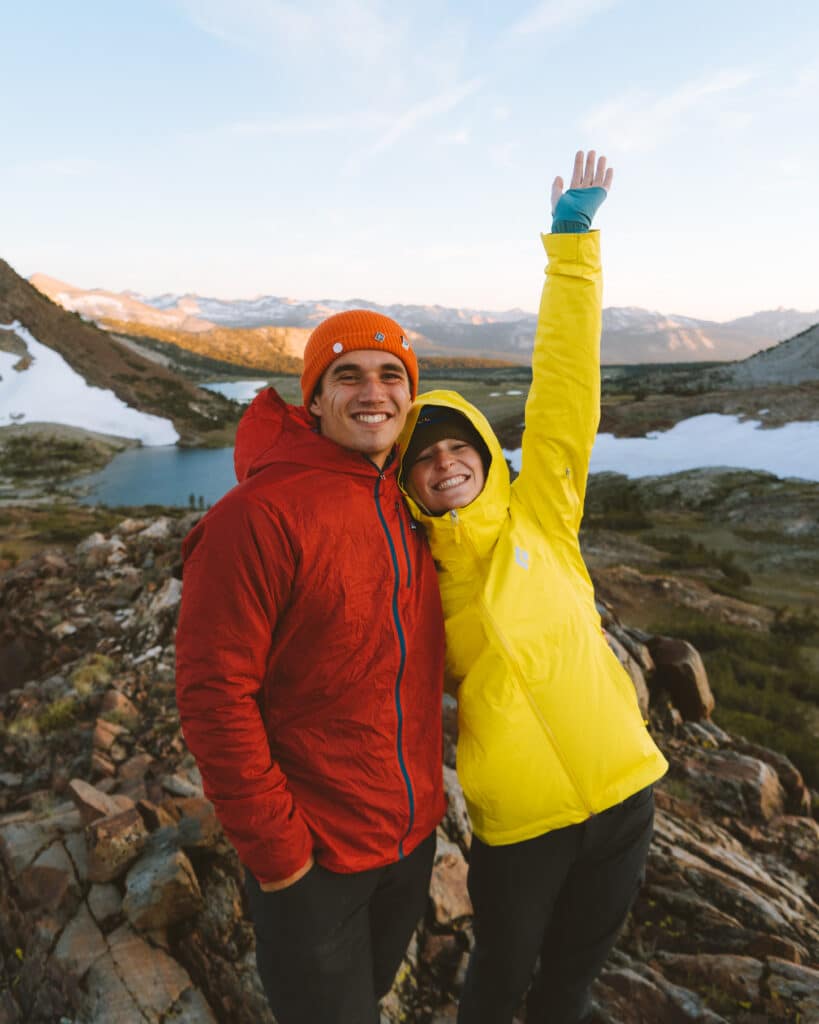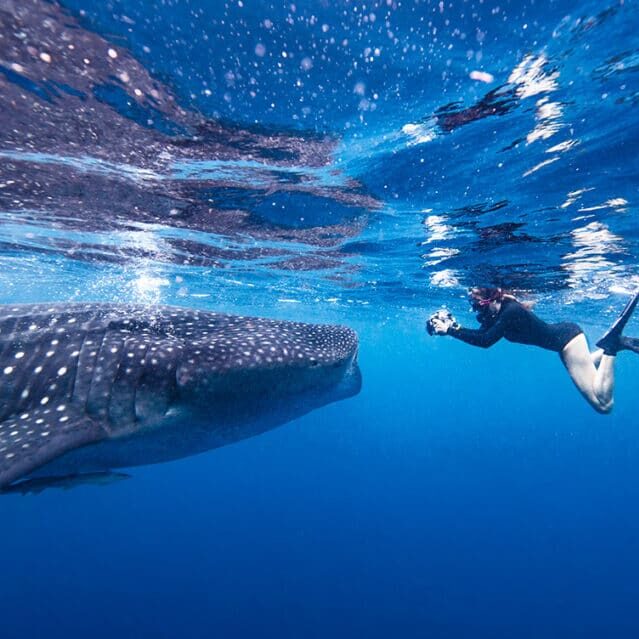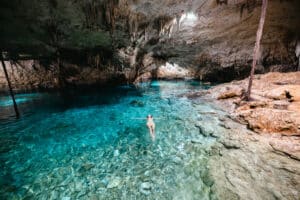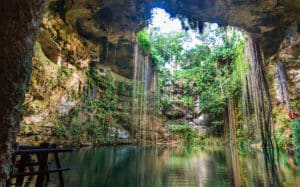Which Cenotes in Riviera Maya are Actually Worth Visiting in 2025?
Disclaimer: This post may contain affiliate links. Please see our Disclosure Policy and Advertiser Disclosure for details.
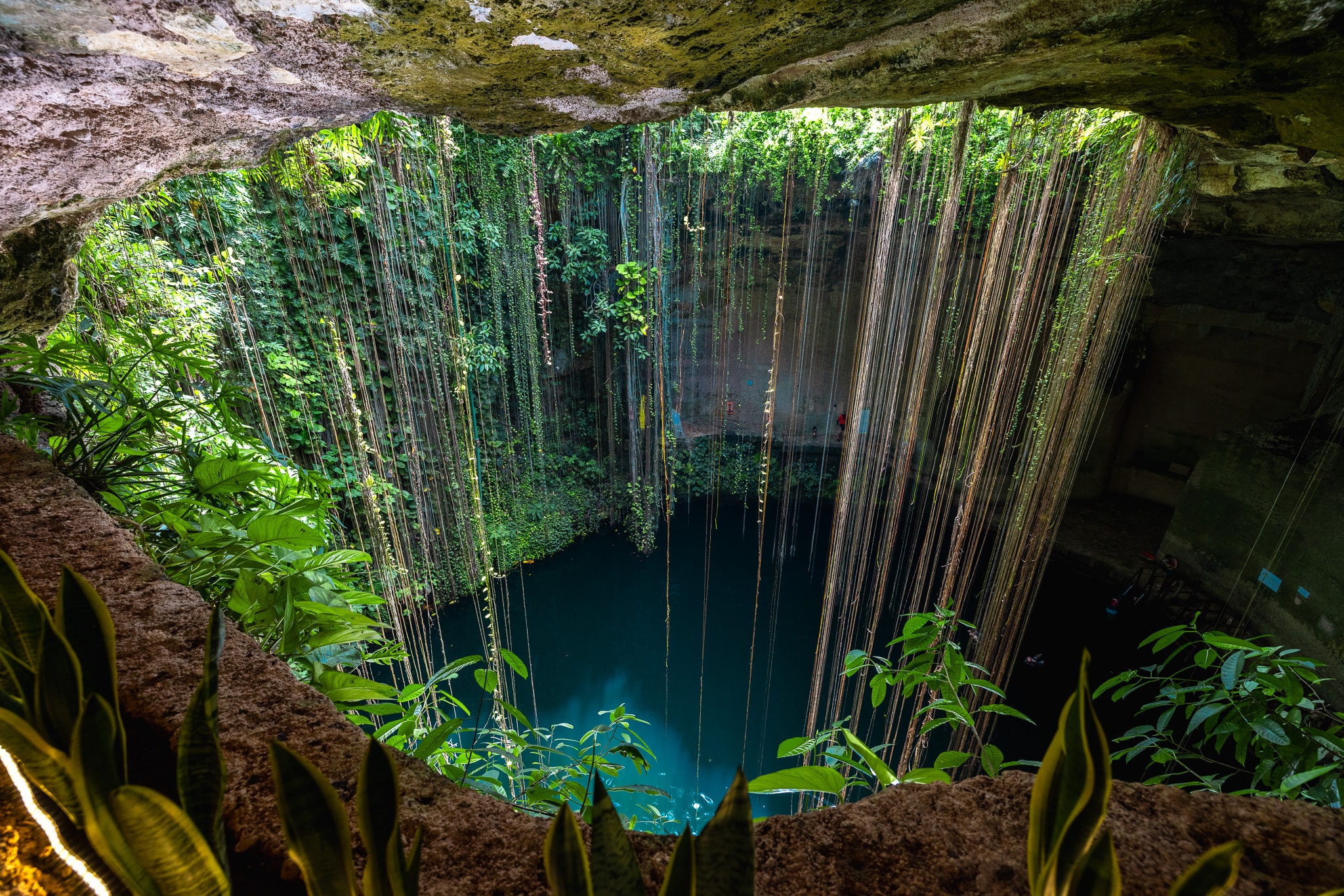
The Riviera Maya region in Mexico, stretching from Cancun to Tulum, is famous for having some of the best snorkeling and scuba diving in the world – from intricate underwater caves, to gorgeous coral reefs in the Caribbean Sea. Not to mention, this stunning area is home to over 6,000 cenotes.
Riviera Maya is a treasure trove of these natural wonders, but not all cenotes in the region are created equal. Having visited the region twice (and getting our advanced PADI scuba diving licenses in its cenotes), we’ve dived deep—literally and figuratively—into some of the best cenotes you actually need to add to your Mexico itinerary.
As Tulum has skyrocketed on the travel radar over the past few years, some cenotes have unfortunately turned into overcrowded tourist traps, while others remain breathtaking, bucket-list-worthy destinations. Who wants to waste their time on the disappointing ones? Not us. So, let’s dive in and explore the best of the best!
What Are Cenotes and Why Are They Unique to Riviera Maya?
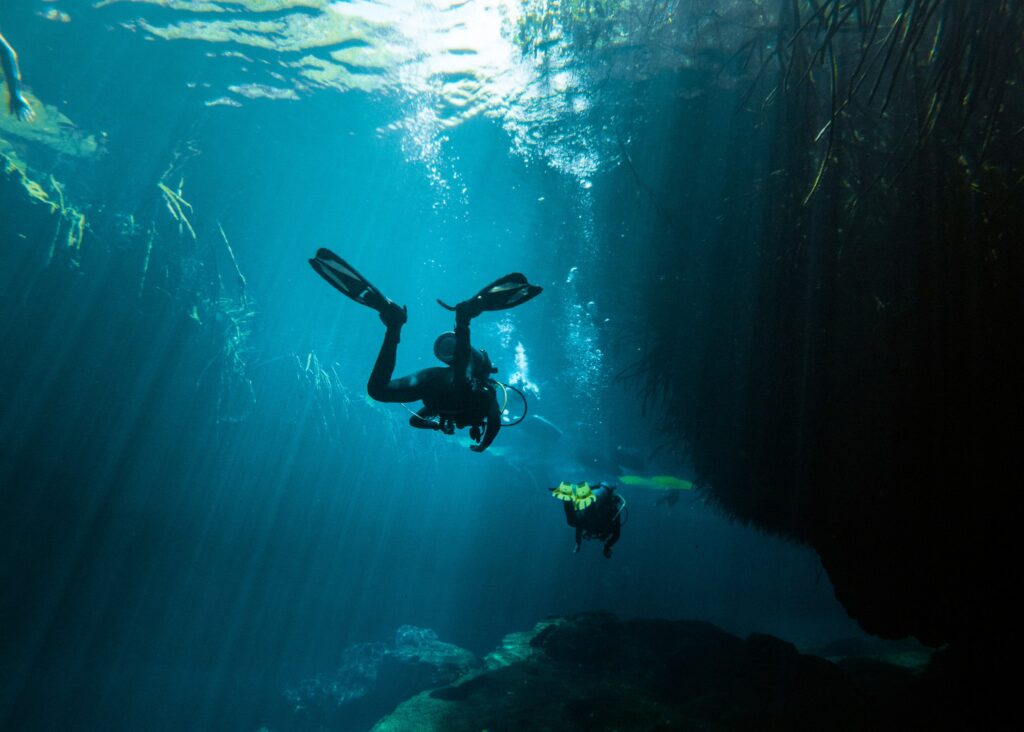
First, a quick crash course: Cenotes are natural sinkholes formed when limestone collapses, exposing pristine groundwater underneath. Think of them as nature’s swimming pools, with a bit of ancient Mayan history. Mexico’s Yucatán Peninsula has everything from open-air lagoons to cave-like formations dripping with stalactites, and these cenotes really appeal to adventurers, snorkelers, divers, and Instagrammers alike.
These natural sinkholes, formed millions of years ago, are scattered across the Yucatán Peninsula and were once sacred to the Mayans, who believed they were portals to the underworld.
Factors to Consider When Choosing a Cenote
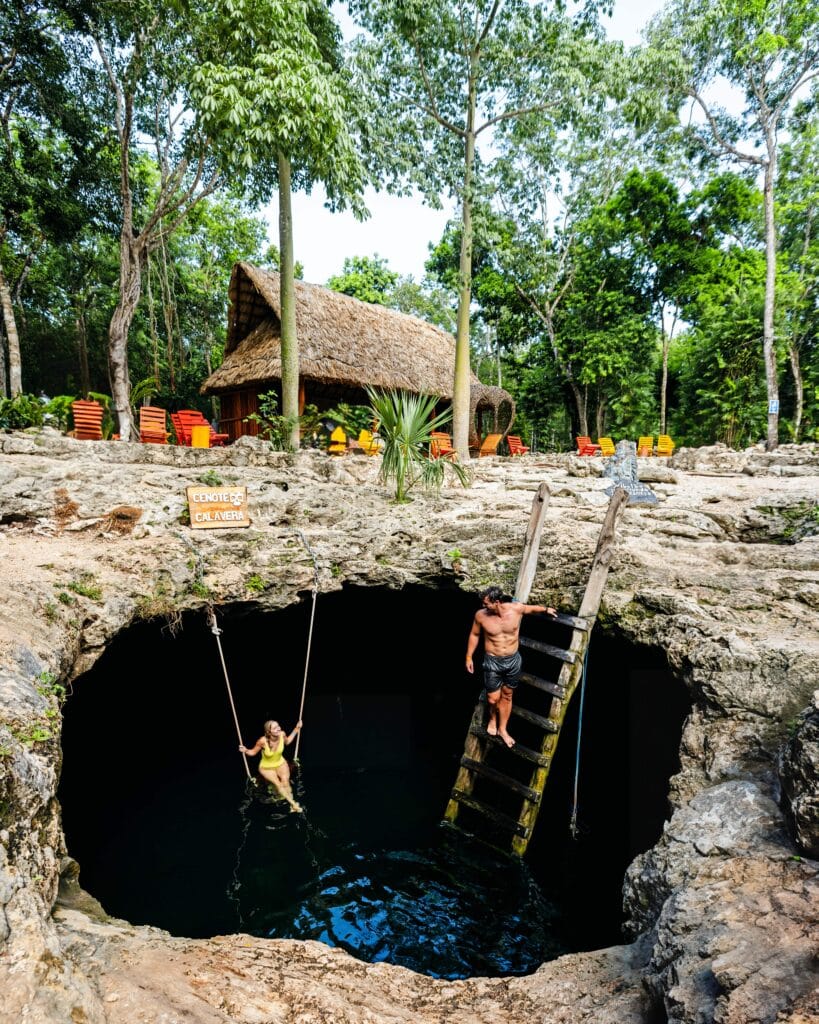
Before you decide to visit just any cenote, let’s talk logistics. Not every cenote fits the vibe you’re going for. Here’s how to pick:
- Accessibility: Some cenotes are easy to drive to (hello, paved roads), while others involve an Indiana Jones-style trek.
- Activities: Are you here for a casual swim, some snorkeling, or an adrenaline-packed dive?
- Crowd Levels: Do you want a lively atmosphere or a secluded escape?
- Cost: Entrance fees can range from $5 to $50 depending on the cenote and facilities. Not to mention, a lot of them will charge you more if you want to take photos in 2025.
- Amenities: Look out for essentials like restrooms, lockers, and snack bars.
- Who’s Coming With You: Not all cenotes are kid-friendly—or diver-friendly, for that matter.
Best Times to Visit Cenotes
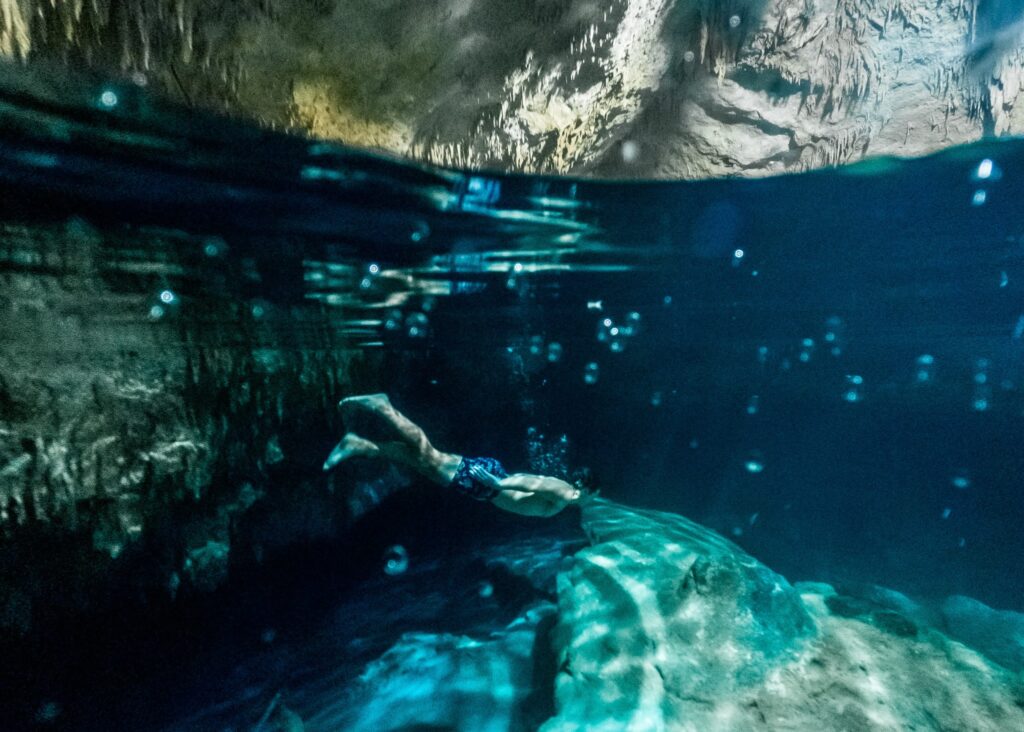
When it comes to visiting cenotes in Riviera Maya, timing is everything. Visit during the dry season (November to April) for clearer water and fewer mosquitoes. Aim for early mornings to dodge crowds and catch that golden light streaming into the cenotes—a photographer’s dream. For the cenotes that rely on sunlight peeking through the open holes in their ceilings, you’ll want to prioritize visiting those during mid day around 12pm for the best lighting.
Tips for Visiting Cenotes Responsibly
Typically, you’ll have to shower off before entering a natural cenote to avoid polluting the water. Keeping that in mind, you won’t be able to wear sunscreen to avoid damaging delicate ecosystems. So if you’re worried about sun damage while swimming, we recommend bringing some sort of SPF rash guard.
Respect the rules—that means no littering, loud music, or reckless jumping. Make sure to support local guides and small businesses for authentic experiences.
What to Pack for a Cenote Visit
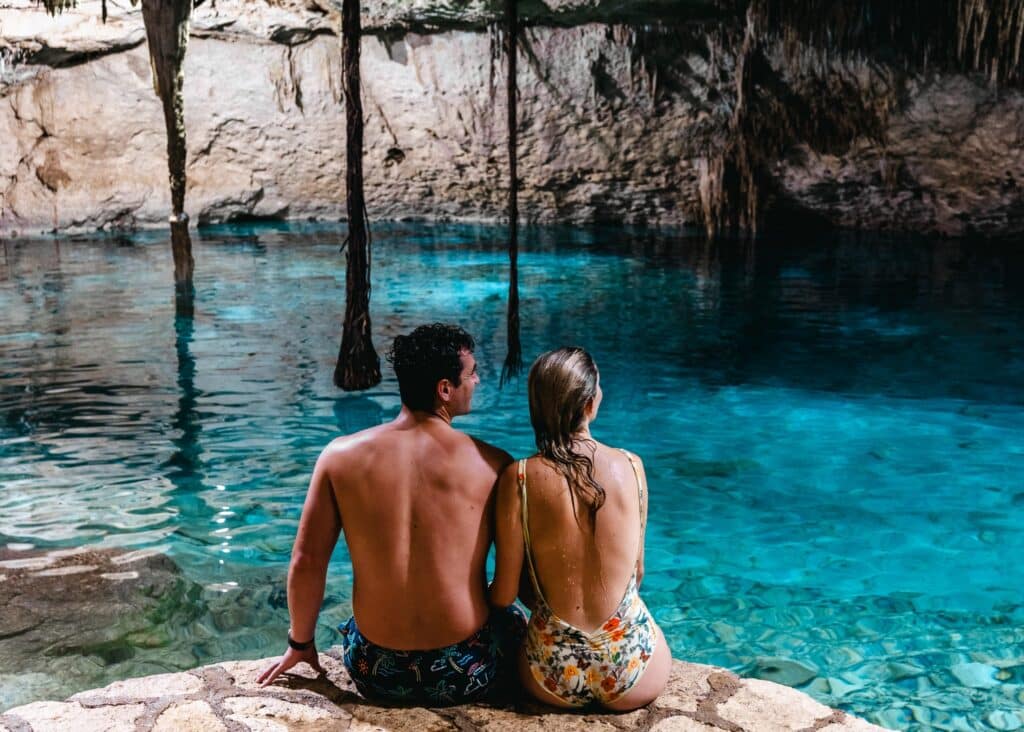
When you’re setting out to go cenote hopping, you’ll want to make sure you’re prepared to go! Make sure to pack:
- Cash – a lot of these cenotes listed don’t take credit cards, so it’s important to stop at an ATM beforehand. The closest ATM to a lot of these is extremely out of the way at Chichen Itza’s entrance, so don’t make the same mistake we did and bring extra along with you.
- Waterproof Phone Case or Go Pro Hero 13 if you’re looking to take photos or videos with your phone.
- Biodegradable sunscreen (protect the ecosystem!).
- Water shoes for slippery surfaces.
- Snorkeling, freediving or scuba diving gear (or rent onsite). If you’re doing a diving certification, typically your gear will be provided by them.
- Towels and a change of clothes.
Pro tip: Skip the bug spray until after your swim—it’s a no-no for cenotes.
Where to Stay For Your Cenote Hopping Trip
Looking for a base? You can decide to base in either Cancun, Playa Del Carmen, or Tulum for the following recommended cenotes. When we were on our Mini Moon visiting these cenotes, we personally decided to stay at each town a few days and make a cenote hopping road trip out of it, BUT if we had to choose one central location to all the best cenotes in Riviera Maya, we’d probably recommend choosing to stay in Playa Del Carmen or Tulum.
Here are some top-rated hotels with a great location nearby to cenotes:
Tulum:
- Mi Amor: This boutique hotel was probably our favorite that we stayed at in the area. Keep in mind this is much more of a luxury, expensive spot, but it’s totally worth it if you’re visiting this region for a special occasion like a honeymoon or anniversary trip.
- Our Habitas Tulum
- La Valise Tulum
- Secrets Tulum Resort & Beach Club
Playa Del Carmen:
- Hilton Playa Del Carmen: We personally stayed here on our mini-moon and loved it. It’s an all inclusive resort and was very well suited for couples.
- Posada Mariposa: This boutique hotel is adorable and in a great central location in Playa Del Carmen.
- Andaz Mayakoba Resort Riviera Maya, By Hyatt
- Fairmont Mayakoba
That being said, if you don’t want to do a ton of driving or rent a car, there are plenty of snorkeling or guided cenote tours that will come to do pickups from both Cancun and Tulum as well.
How to Get Around to Visit All The Cenotes
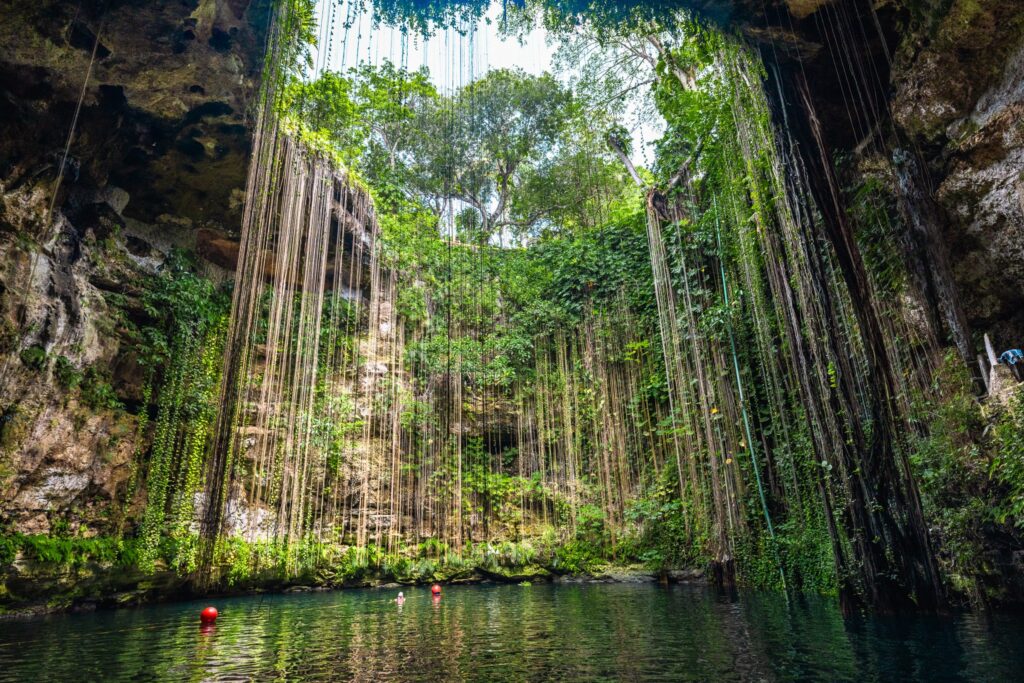
Speaking of renting a car, there’s a few things to know about renting a car in Mexico! We flew into the Cancun airport, although you can also fly into the Tulum Airport as well now. This is likely where you’re going to pick up your car. Now, while we highly recommend renting a car for flexibility in your itinerary, there’s some things we wish we knew before renting a car down here the first time we went.
Firstly, by Mexican law, you must have third-party liability insurance (known as SLI or TPL). This covers damage or injuries to other people or property. Many car rental companies don’t include this in the base price you see online, so it can significantly increase the cost at pick-up. I thought this was a scam, however, after further research we did end up buying it. Fun fact – you can haggle with your rental car provider to try and get the price reduced. So although we typically don’t opt for extra car insurance coverage when traveling because we have a ton of travel credit cards that include this benefit, we recommend at a minimum, purchase SLI/TPL to comply with Mexican law.
At pick up, make sure to take photos and videos of the car before leaving the lot to document any pre-existing damage. And when you’re paying at gas stations with cash, make sure to keep track of the bills your paying to avoid any potential scams. Lastly, just note, driving in this region is (mostly) easy if you’ve driven in areas like Los Angeles before. However, if you’ve never driven outside the country, then you might feel a little stressed. In which case, you might want to hire a private driver to take you around to the cenotes or just head out on a few cenote tours.
Cenotes That Are Actually Worth Visiting in Riviera Maya
Cenote Ik Kil
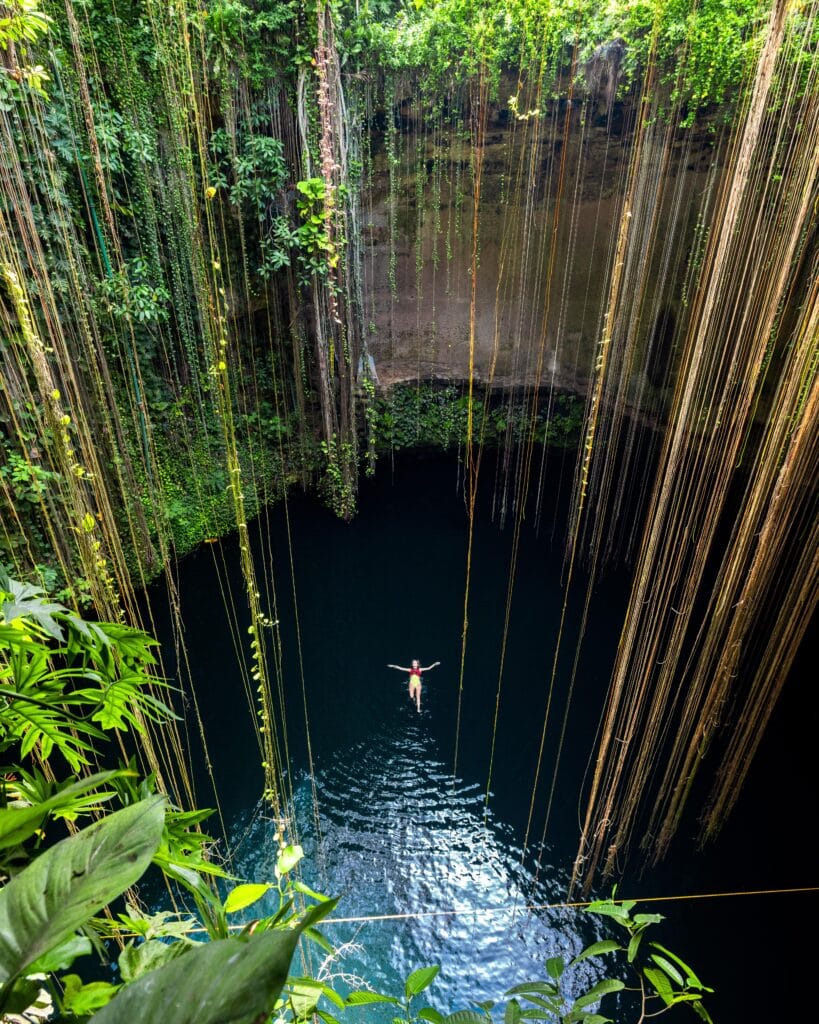
Cenote Ik Kil is one of the most famous cenotes in the Riviera Maya, and for good reason. Located near Chichén Itzá, this cenote is a perfect combination of natural beauty, cultural significance, and accessibility. The cenote’s vertical walls are adorned with hanging vines and roots that reach all the way down to the water. Sunlight streams into the cenote, creating a magical atmosphere, especially in the morning.
Cenote Ik Kil is easily accessible by car, about a 2-hour drive from Cancun or Playa del Carmen. It’s just off the main road connecting Valladolid and Chichén Itzá, and it’s a fairly easy drive. You should definitely combine this cenote with your trip to Chichén Itzá.
Key Features of Cenote Ik Kil
- Crowd Level: Busy. Go in the morning right when it opens, if possible, to avoid the crowds and tour buses. It’s a magical experience having this place to yourself.
- Admission Fee: The entrance fee is typically around $150–$200 MXN (~$8–$11 USD). Prices may vary depending on the season or if visiting as part of a tour.
- Type: Open cenote
Unlike cave cenotes, Ik Kil is an open cenote with its lush greenery cascading down the walls, making it feel like a hidden paradise. - Depth: About 50 meters deep, with the water level sitting around 26 meters below ground level.
- Diameter: Approximately 60 meters wide, providing plenty of room to swim and explore.
- Water Temperature: Refreshingly cool, making it the perfect spot to cool off after visiting Chichén Itzá.
Facilities and Accessibility:
- Ik Kil is one of the more developed cenotes, with legitimate stairs leading down to the water.
- Facilities include changing rooms, restrooms, lockers, and even an on-site restaurant.
- There’s a diving platform for thrill-seekers who want to jump into the water.
Cenote Taak Bi Ha
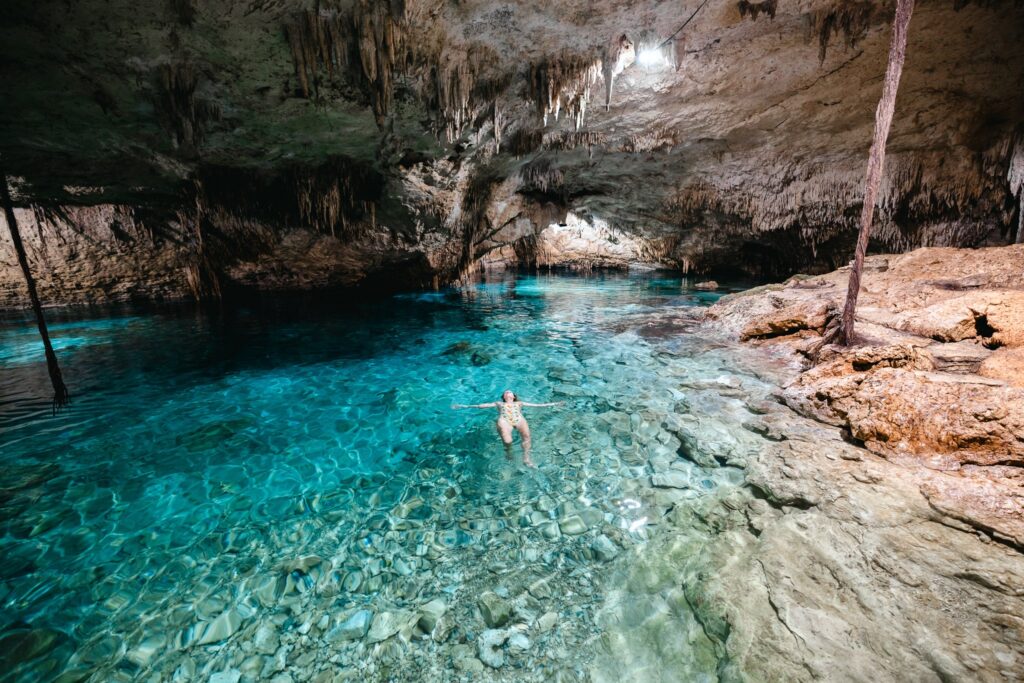
Nestled near Tulum, Cenote Taak Bi Ha is a lesser-known cenote that feels like a secret escape from the more crowded Riviera Maya hotspots. This underground cenote is a dream for adventurers, snorkelers, and divers alike, with its crystal-clear waters, dramatic stalactites, and a serene, off-the-beaten-path vibe. If you’re looking for an intimate and magical cenote experience, Taak Bi Ha definitely delivers.
Taak Bi Ha is located off the main road between Tulum and Playa del Carmen, near the entrance to the Dos Ojos cenote park. A car rental is the easiest way to reach it, and parking is available on-site.
Unlike the more famous cenotes, Taak Bi Ha remains relatively undiscovered by the masses, giving you a peaceful and private experience. This cenote probably had the least amount of other people we encountered out of all the cenotes in Riviera Maya that we visited. It truly felt like we stepped into a hidden paradise that no one else knew about. It’s actually right next to the popular Dos Ojos cenote system, which seems to overshadow it in popularity, keeping this a great hidden gem in the area.
Key Features of Cenote Taak Bi Ha
- Type: Underground cenote. This cenote is entirely enclosed, with jaw-dropping rock formations illuminated by carefully placed lights. You will have to descend down some sketchy stairs to access it so it’s not super accessible.
- Water Clarity: Exceptionally clear, making it ideal for snorkeling and underwater photography.
- Depth: Varies between shallow and deep areas, making it suitable for swimmers of all skill levels. If you’re an advanced cave diver, you are able to dive in this cave system along with the Dos Ojos cenote.
- Atmosphere: Quiet and tranquil—perfect for those looking to avoid the crowds.
- Entrance Fee: Expect to pay around 350–400 MXN (~$20–$25 USD), slightly higher than other cenotes, but worth it for the exclusivity. It also comes with a free life jacket rental (not required).
Casa Cenote
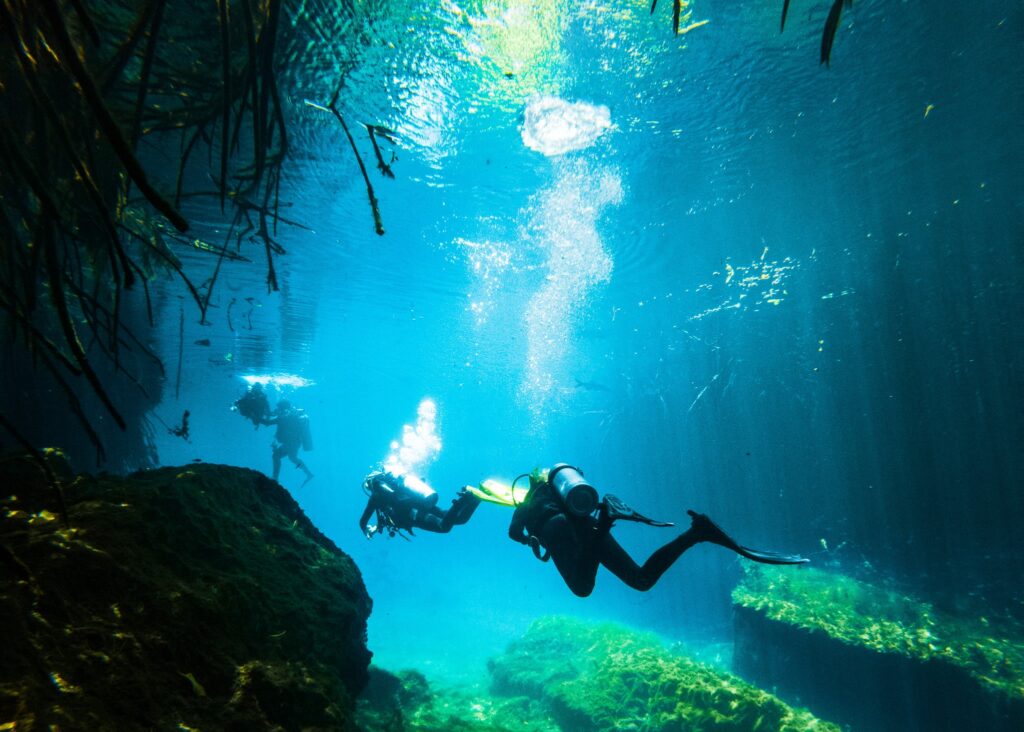
Casa Cenote, located just outside Playa Del Carmen and Tulum, is a one-of-a-kind cenote that feels more like a river winding through lush mangroves. Unlike the enclosed caverns or circular pools that most cenotes are known for, Casa Cenote is open-air and merges freshwater with the ocean, creating a unique snorkeling and diving experience. Swimming through the cenote’s mangroves feels like a serene jungle adventure, with roots twisting into the water and sunlight filtering through the tree roots underwater.
If you’re new to diving or looking for a less intimidating cenote dive, Casa Cenote is ideal. The shallow depth and clear visibility make it a safe and stunning introduction to cenote diving. This was one of the cenotes we dove in during our Advanced Underwater PADI training and one noteworthy thing was that it was SO large compared to the other cenotes. You could have a ton of people in here at once and still feel like you have a good amount of space to yourself. AND, the mix of fresh and saltwater creates a home for marine life you won’t find in other cenotes, like fish, crabs, and even occasional sea turtles.
Key Features of Casa Cenote
- Type: Open cenote. Casa Cenote is more like a freshwater lagoon, winding through mangroves in a scenic, open-air setting.
- Connection to the Ocean: The cenote connects to the sea via an underground tunnel, creating a brackish water environment that supports diverse marine life (including a tame resident crocodile named Panchito)
- Depth: Relatively shallow, averaging 6-8 meters (20-26 feet), making it accessible for all levels of swimmers and divers.
- Atmosphere: Peaceful and natural, perfect for snorkeling and kayaking.
- Entrance Fee: The entrance fee is typically 150–200 MXN (~$6–$11 USD), which includes access to the cenote. Note, here, it costs more money to bring a camera!
Cenote Suytun
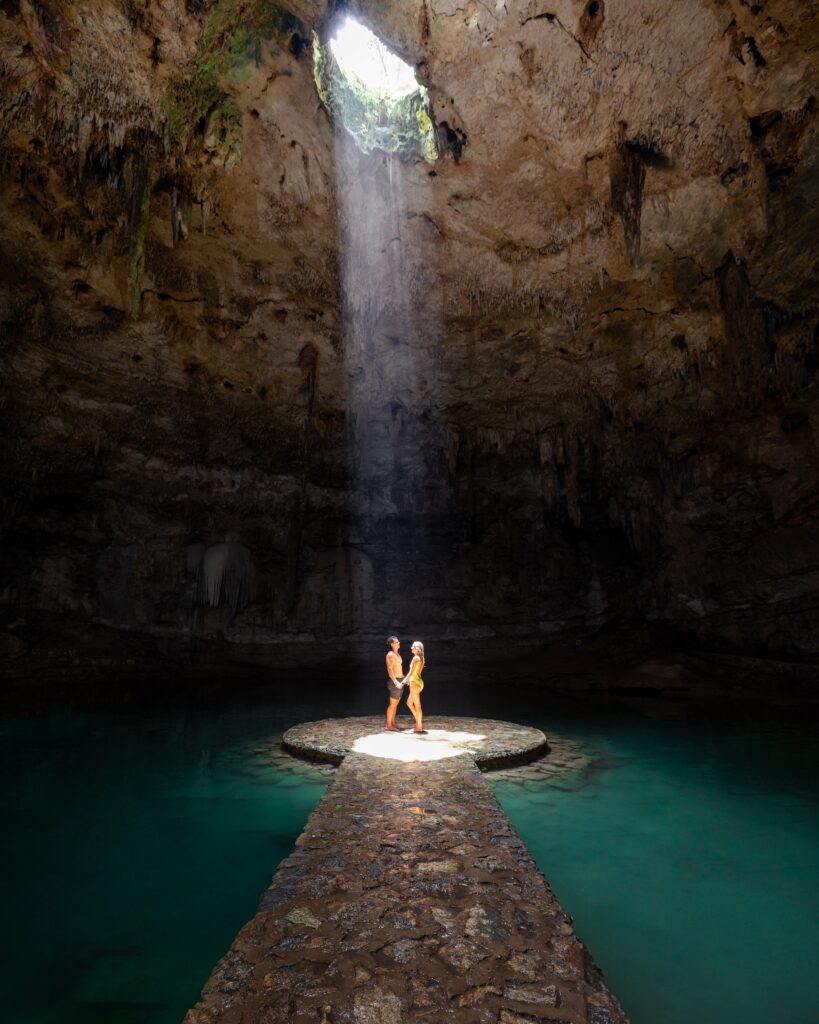
If you’ve seen photos on Instagram (perhaps from us) of a glowing stone platform surrounded by shimmering turquoise water and a beam of light streaming from above, you’ve likely already fallen in love with Cenote Suytun. Located near Valladolid, this cenote is one of the most iconic in the Yucatán Peninsula, known for its surreal atmosphere and unbeatable photo opportunities. But there’s more to Suytun than just Instagram fame—its cultural and natural beauty make it a worthwhile stop on any Riviera Maya itinerary.
The word Suytun means “stone center” in Mayan, and the cenote’s design incorporates this heritage with its stone platform symbolizing balance and harmony.
The iconic light beam effect is at its peak between midday and early afternoon when the sun is directly overhead. This is your chance to capture a bucket-list-worthy shot. We visited at 12pm-1pm and got extremely lucky with the weather and timing working out, as well as not having too many crowds to compete with to get the photo we wanted!
The cool, shallow water is refreshing after a day of exploring Valladolid or Chichén Itzá. Life jackets are mandatory and included in the entry fee. They are extremely strict about the life jackets, and you can only take them off if you’re taking a photo on the platform.
Key Features of Cenote Suytun
- Type: Underground cenote. It’s fully enclosed, with a small circular opening in the roof that creates a dramatic spotlight effect.
- Platform: A stone walkway leads to a circular platform in the middle of the water, ideal for photos. That being said, there does get to be a line here for photos if you visit when it’s busy.
- Depth: The water is shallow near the platform (around 5 feet) but deepens in other parts, making it suitable for swimmers.
- Water Clarity: Slightly cloudy compared to open cenotes, but still stunning and safe for swimming.
- Entrance Fee: 150–200 MXN (~$8–$11 USD) per person, making it one of the more affordable cenotes in the region.
El Pit
If you’re an experienced diver looking for one of the most awe-inspiring cenote adventures in the Riviera Maya, El Pit is the ultimate destination. Part of the Dos Ojos cenote system, El Pit is known for its incredible depth, surreal light effects, and the mystical hydrogen sulfide cloud that creates an otherworldly diving experience. It’s not for the faint of heart, but for those who take the plunge, El Pit is unforgettable.
The site is popular for advanced divers looking to explore the mysterious layers of the cenote. The narrow opening at the top allows sunlight to create dramatic beams that pierce through the water, especially during the midday hours. It’s an almost spiritual experience to witness. Not to mention, At around 30 meters (100 feet), divers encounter a thick, eerie layer of hydrogen sulfide that creates a cloud-like illusion. Passing through it feels like descending into another dimension.
Key Features of El Pit
- Type: Deep cenote. El Pit is a vertical sinkhole with steep limestone walls, offering an immersive diving experience.
- Depth: 40+ meters (130+ feet)—one of the deepest cenotes in the region. El Pit is best suited for those with an Advanced Open Water Certification due to its depth and technical requirements. Dive shops in Tulum or Playa del Carmen offer guided dives for those with the right credentials.
- Visibility: Exceptionally clear, often exceeding 30 meters, allowing divers to see stunning light beams and underwater formations.
- Atmosphere: Otherworldly and tranquil, ideal for adventurous spirits and photographers.
- Entrance Fee: The cost to enter El Pit is around $350–$400 MXN (~$18–$22 USD) per person. Guided diving tours typically include this fee.
Other FAQs About Cenotes
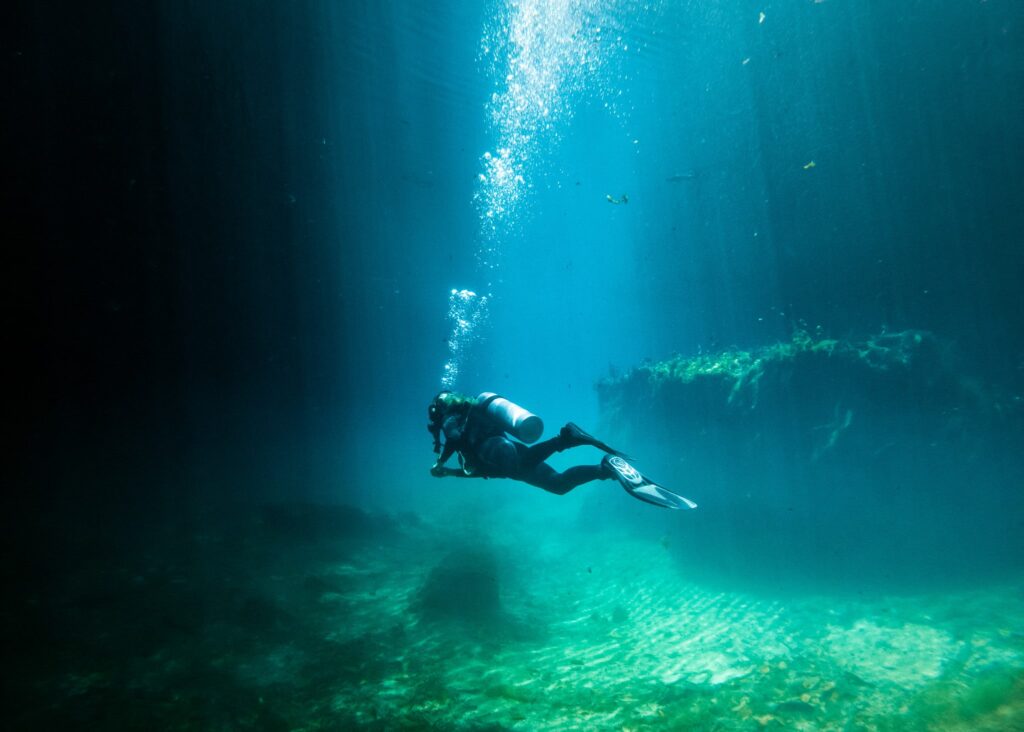
Q: Are cenotes safe for swimming?
A: Absolutely, as long as you follow safety guidelines. Many will offer you life jackets as well.
Q: How do I get to the cenotes?
A: Rent a car or book a guided tour. Public transport can be tricky and we wouldn’t necessarily recommend it.
Q: Can I bring kids to cenotes?
A: Yes! Many cenotes are family-friendly.
Q: Do I have to have my scuba certification to dive in the cenotes?
A: If you are trying to go scuba diving in cenotes around this region, most require you to have your advanced certification as they are deeper and more intricate to dive in.
Overall, exploring Riviera Maya’s cenotes are a magical experience you won’t forget. Whether you’re swimming, free diving, or scuba diving, each cenote offers a unique adventure. So pack your gear, respect nature, and prepare for some unforgettable memories. Which one would you head to first?
Ready to Explore More of Mexico?
Looking for more inspiration on gorgeous destinations in Mexico? Check out our trip planning guide to visiting Puerto Vallarta. Or perhaps, check out our experience on one of the best taco tours in all of Mexico.
You may also enjoy:
